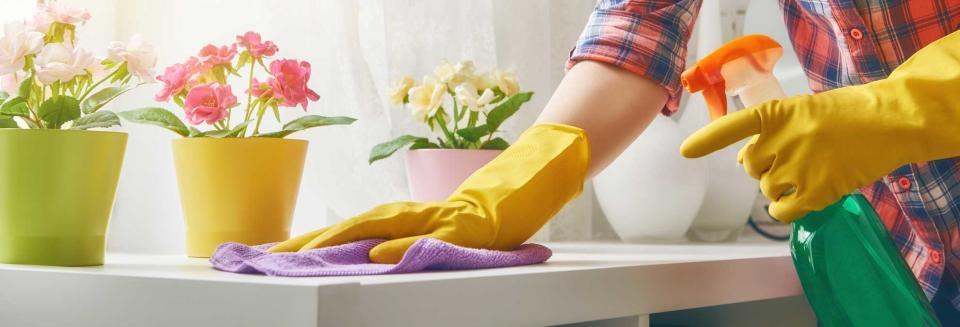Simple Steps to a Healthy Home This Spring
Giving your home a thorough spring cleaning can certainly make it shine. But a few other steps will help you make sure you're living in a healthy home. Here's what our experts advise:
Pick Household Products Wisely
Consider going green. Many cleaning products contain volatile organic compounds, or VOCs, which can irritate eyes and throat and cause headaches and dizziness.
Some products are free of VOCs. For example, two cleaning sprays, Clorox Green Works Multi-Surface Cleaner and Sustainable Earth By Staples Glass Cleaner, have no VOCs and work as well as comparable items. (We tested the Green Works product and found that it did a good job of removing soap scum and dirt.)
Skip antibacterial soap. Triclosan and triclocarban, which are sometimes found in antibacterial soaps, can contribute to the growth of antibiotic-resistant bacteria. The Food and Drug Administration has banned their use in soaps, but manufacturers have until later this year to comply.
Buy small. Purchase products with strong fumes (such as paint thinner and gas) in small amounts so that you don’t have to store half-used containers. Even closed, they can emit noxious fumes.
Make Your Bedroom More Sleep-Friendly
Research shows that getting less than 7 hours of shut-eye per night can harm your health. Try the following for sounder sleep:
Check your mattress. If yours is more than 8 years old and you often wake up stiff and sore, it might be time for a new one. Our mattress ratings, for subscribers, can help.
Keep it cool, dark, and quiet. The ideal room temperature for sleep is between 68° F and 70° F. If streetlights or early-morning sun keep you from a full night of slumber, try blackout curtains or wearing an eyeshade. You can also use a white-noise machine or inexpensive drugstore earplugs to block noise.
Allergy-Proof Your Living Space
Protect your sleep spot. For a healthy home, keep pets out of your bedroom if you’re allergic. Use anti-allergy casings on your mattress and pillows. (Look for products made of woven fabric with a fabric pore size of 6 or fewer microns.)
Wash bedding weekly in hot water and dry in a hot dryer to kill dust mites.
Fight pests. Mice, rats, and cockroaches can also be sources of allergens, and you don't want them in your healthy home.
Jay Portnoy, M.D., division director of allergy, asthma, and immunology at Children’s Mercy Hospital in Kansas City, Mo., says that eliminating food and water sources for these pests can help reduce their population, but that you might need to hire a professional to get rid of these unwelcome visitors.
Ditch the dust. Keeping dust levels down reduces allergens. And a 2016 study found that household dust can contain particles such as flame retardants and phthalates, which have been linked to asthma and cancer.
Dust furniture and other hard and soft surfaces around your home often. (See Consumer Reports' recommendations on best dusting tools here.)
Mop hard floors and vacuum carpets regularly. Consumer Reports recommends that people with allergies or asthma use a vacuum with a high-efficiency filter, such as the top-rated Kenmore Elite 31150.
You can also try an air purifier, such as the top-rated Honeywell HPA300, but be sure it’s powerful enough for the size of the room you plan to use it in.
Editor's Note: This article also appeared in the April 2017 issue of Consumer Reports on Health.

More from Consumer Reports:
Top pick tires for 2016
Best used cars for $25,000 and less
7 best mattresses for couples
Consumer Reports has no relationship with any advertisers on this website. Copyright © 2006-2017 Consumer Reports, Inc.

